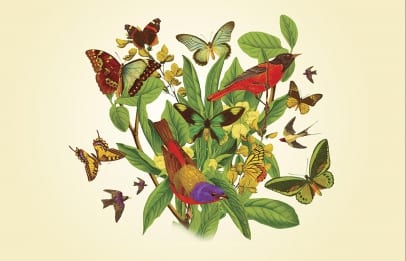Back in 2010, we had a lot of fun kicking George Alan Rekers when he was down.

But after the jokes, people began discussing Reker’s horrible history, how the author of the 1982 book Growing Up Straight: What Every Family Should Know About Homosexuality had spent the 1970s working on the “Feminine Boy Project,” an attempt to “cure” non-masculine boys that led to the heartbreaking suicide of Kirk Murphy, Reker’s poster boy for his “treatment.”
The sordid history of what’s been called “the sissy-boy experiment” is among the chapters in the fascinating new book NeuroTribes, gay journalist Steve Silberman’s history of autism, in which he documents how Rekers based his work on stopping “feminine” mannerisms like limp wrists, swishy gaits and fussy speech in boys on the work of his UCLA colleague O Ivor Lovaas, who believed he could cure autism through physical punishment. Throughout the past century, autistic people and homosexuals alike have been subjected to electric shocks and ice-water baths in institutions aiming to “fix” them. Rekers and Lovaas were carrying on a long and ugly tradition of torturing people into becoming “normal.”

“I don’t think it’s an accident that three of the writers who have foregrounded the humanity of people with autism rather than focusing exclusively on pathology — Oliver Sacks, Andrew Solomon and me — are or were gay,” Silberman says. “Like autistic people, our way of being was classified as a mental illness for decades. Both gay people and autistic people have been subjected to brutal forms of “treatment” by the psychiatric establishment, such as aversive therapy, that are akin to torture. Mothers were cruelly blamed for the genesis of both conditions in their children for most of the 20th century. Both groups know well what it feels like to be bullied, marginalized, caricatured in the media, and erased from history.”
Like gay people, Silberman says, “autistic people have always been here in large numbers, but invisible,” one of the largest minorities in the world. Sometimes this link is direct — there have been celebrated gay autistic men like Daniel Tammet and possibly Alan Turing but also horror stories like the fate of Steven Simpson, set on fire at his own birthday party — and, as with sexuality, autism exists on a spectrum.
“One interesting phenomenon that is still relatively unexplored by science,” says Silberman, “is the huge number of autistic young people who identify as sexually fluid, non-binary gendered, asexual, polyamorous or some other non-standard identity. Is it biological? Is it because autistic people are somewhat ‘immune’ to socialization?”
There have been intriguing studies showing greater numbers of autistic people identifying as queer than in the “neurotypical” population, as well as a higher rate of autism among trans people than among cisgender people. Given these links and shared history, I ask Silberman for some concrete ways neurotypical LGBT people can help their autistic friends. He has plenty.

Similarly, if an autistic friend comes out to you, be supportive without being pitying, and avoid saying things like, ‘You can’t be autistic — you make eye contact!’ or ‘You don’t seem autistic!’ That’s the same sort of poisonous compliment as telling a gay man that he could pass for straight — it reinforces stereotypes.”
Facebook and social media have been an enormous boon to autistic people, helping them communicate and connect like all of us, but Silberman hates the misinformation that’s so easily spread: “If you’re posting a video on Facebook about how vaccines, pesticides, wi-fi or any other factor in the modern world is creating an “epidemic” of autism, you may think you’re performing a public service (after all, who doesn’t hate Monsanto and big pharma?) but it means you’re uninformed and spreading stigma in the guise of compassionate concern.”
Silberman recommends the Autistic Self-Advocacy Network (with chapters in Canada) as an example of “great support organizations run by autistic people that aim to empower autistic people, rather than organizations that increase the stigma of autism by playing on parental fears or hyping the non-existent ‘epidemic’” and he recommends reading “superb autistic writers like Julia Bascom and Nick Walker to get a taste of what autistic life is like from the inside. Would you only read straight writers on the gay experience?” he asks. “Learning about autism only from clinical sources is apt to leave you with the notion that autistic people are little more than the sum of their deficits and impairments. Don’t believe it.”



 Why you can trust Xtra
Why you can trust Xtra


